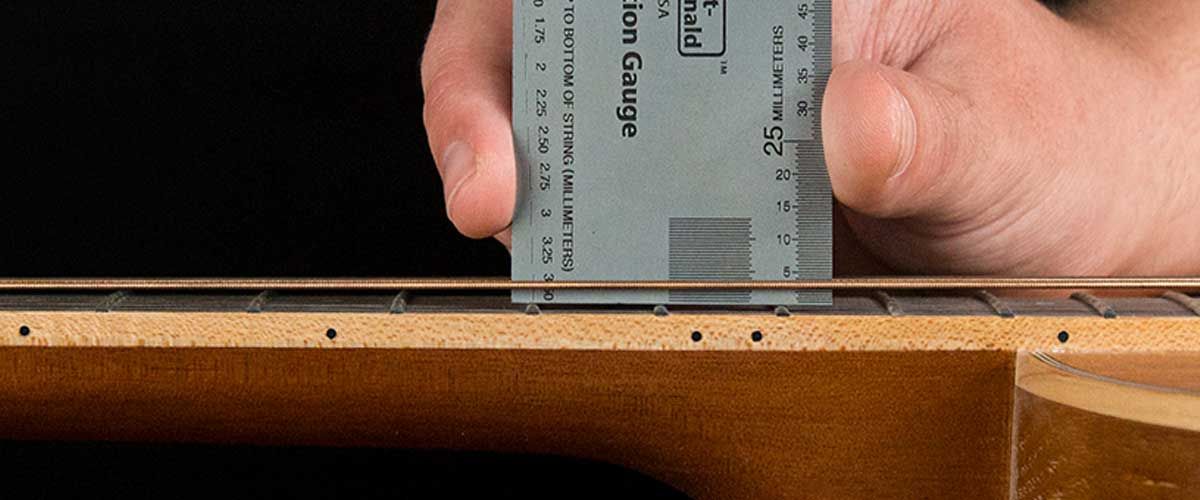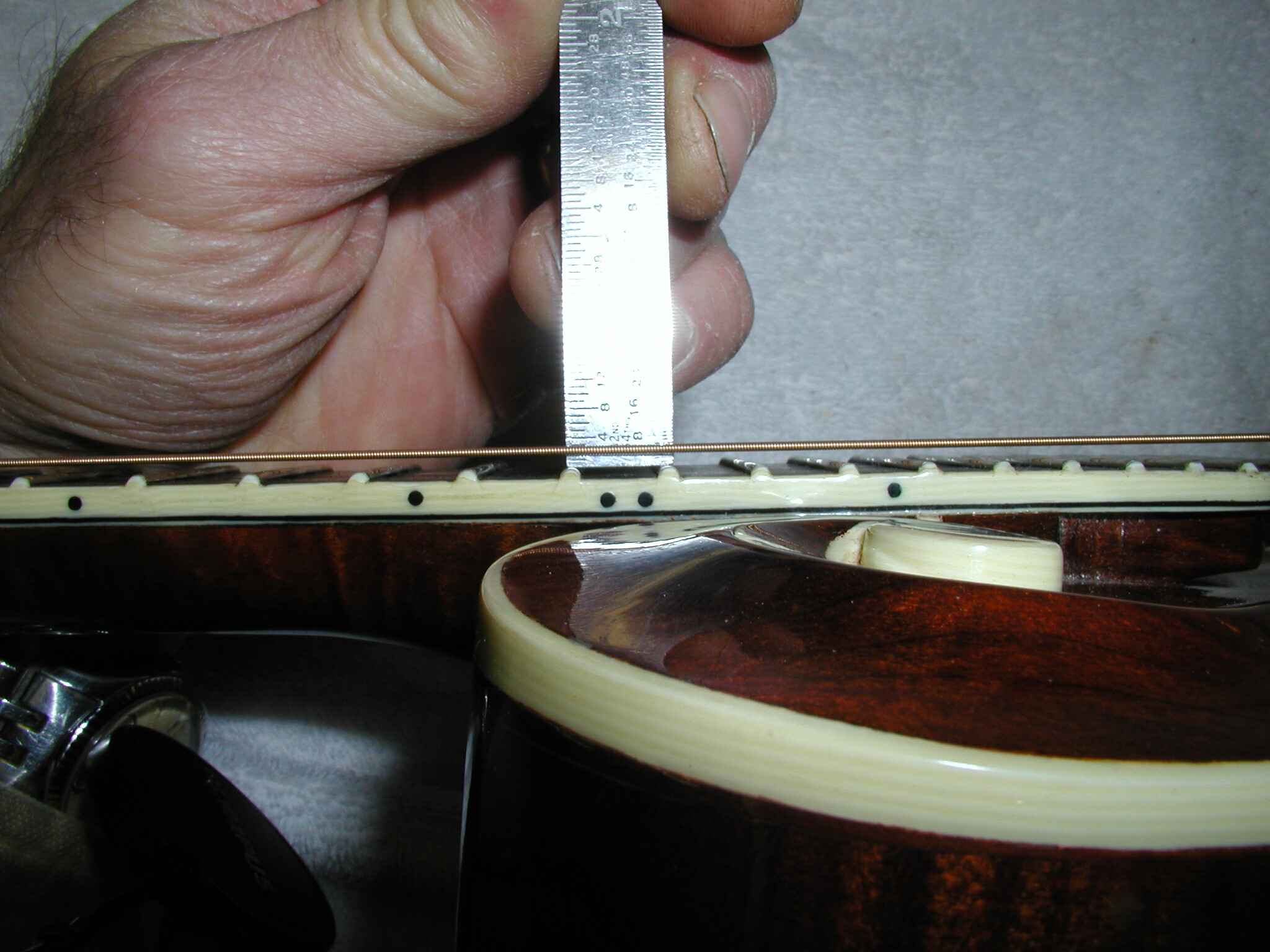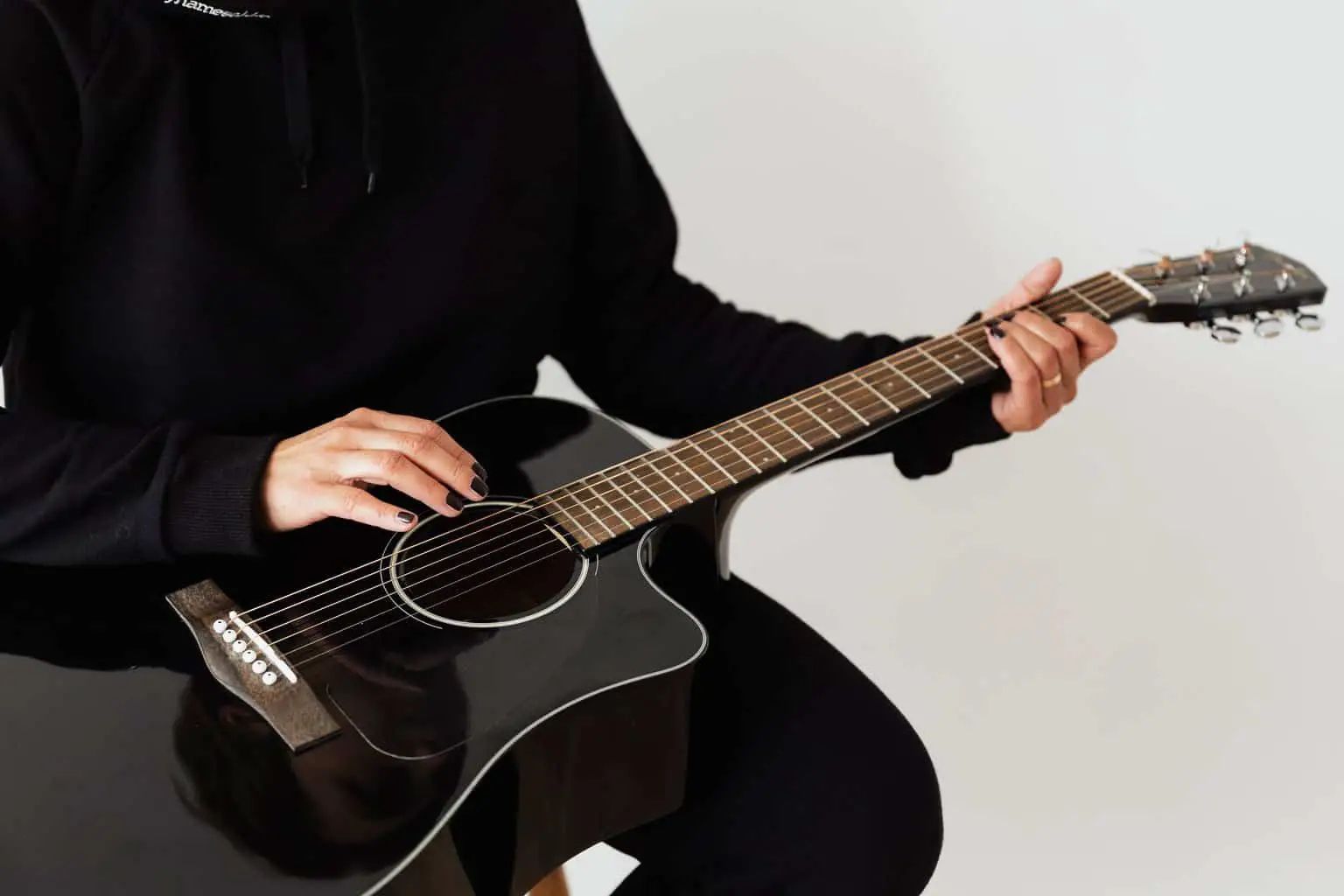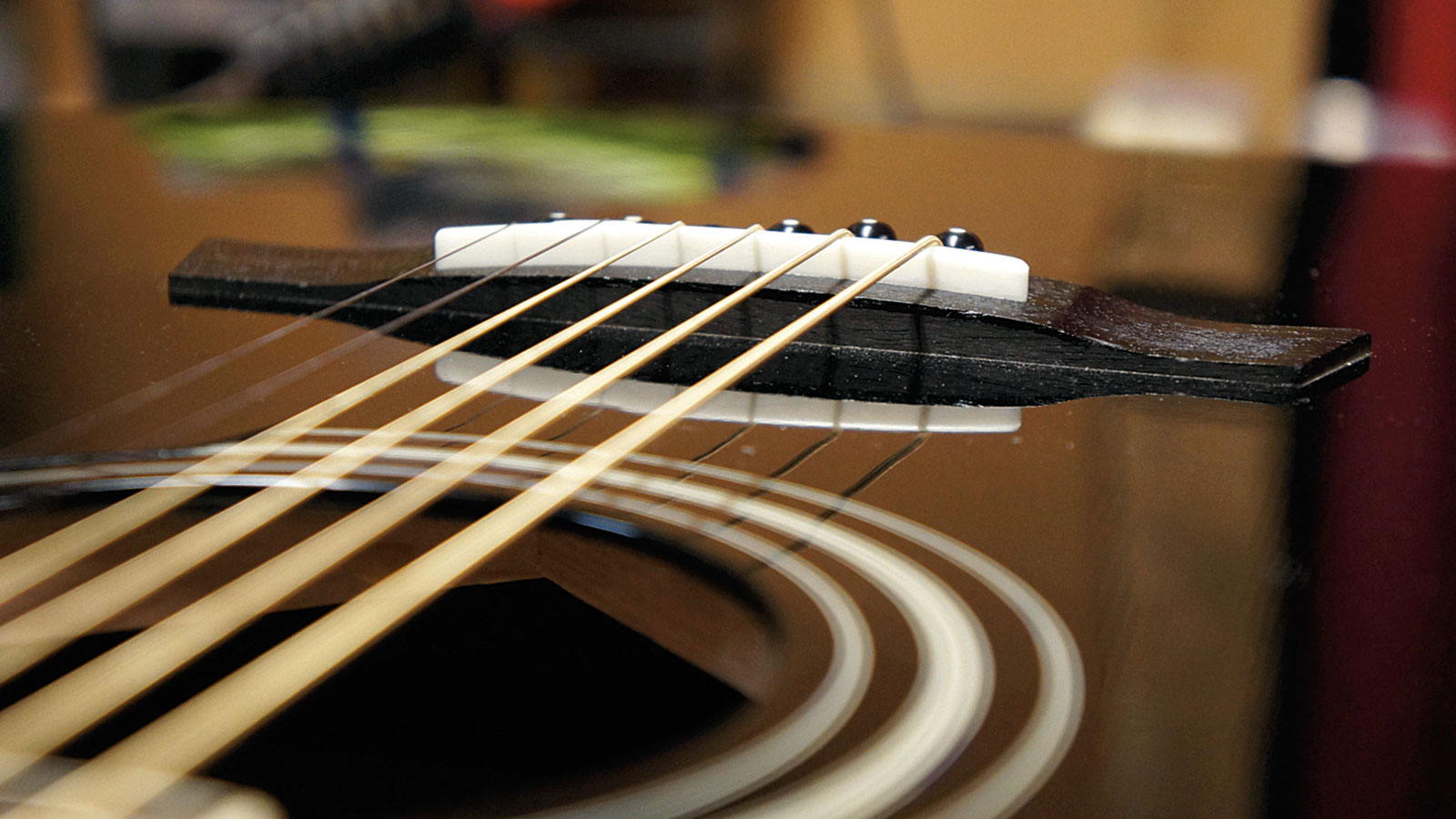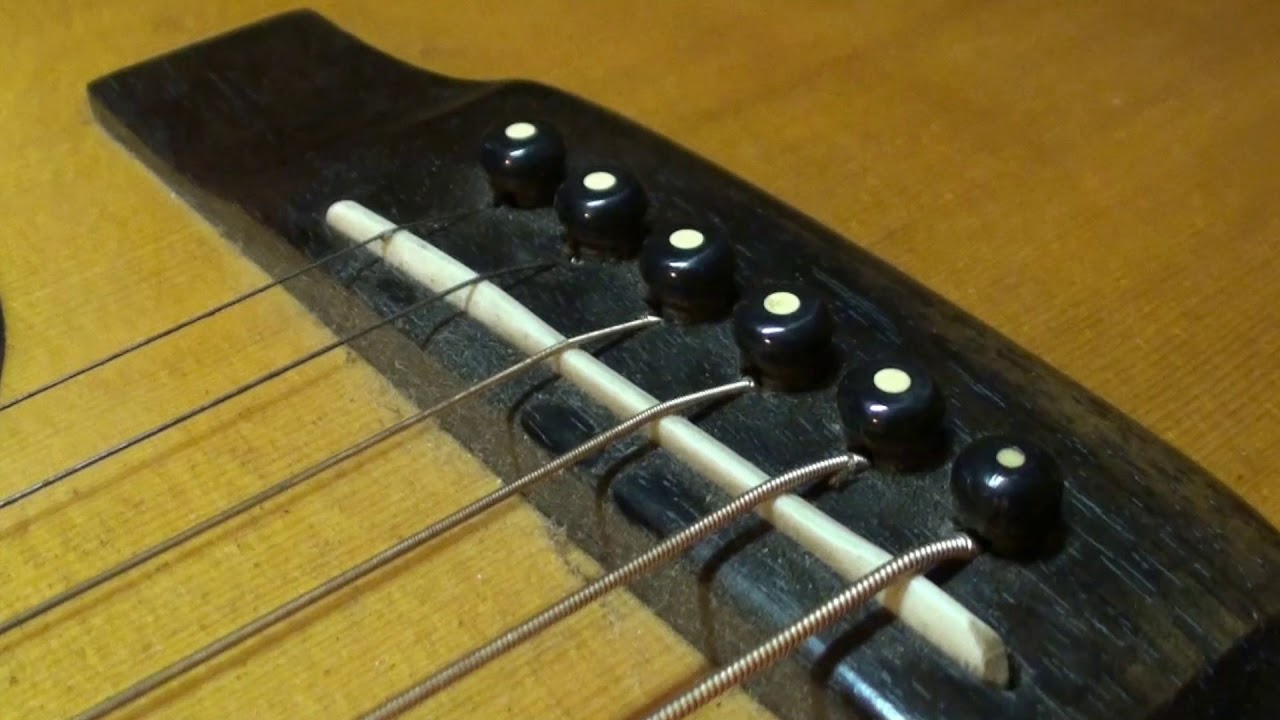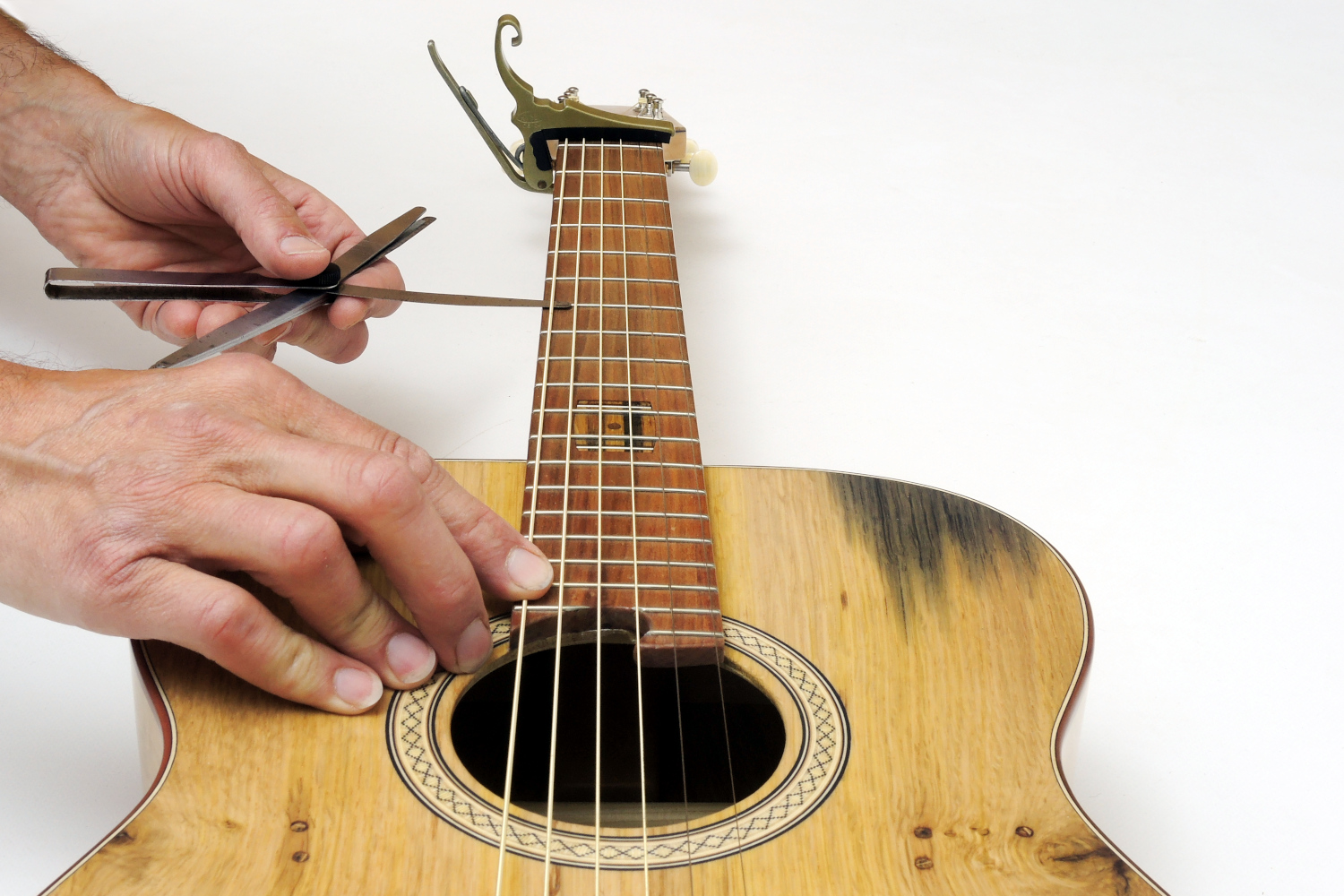Introduction
Welcome to the world of acoustic guitars! Whether you’re a seasoned player or a beginner, understanding the importance of string height is essential for achieving optimal playability and sound. The string height, also known as the action, refers to the distance between the strings and the fretboard. It plays a significant role in determining the ease of fretting notes, the clarity of sound, and overall playability.
When it comes to acoustic guitars, finding the perfect balance in string height is crucial. While a high action can make it difficult to press down on the strings, leading to finger fatigue and intonation issues, a low action can cause buzzing and fretting out. Therefore, finding the ideal string height at the 12th fret is key for getting the best out of your acoustic guitar.
In this article, we will delve into the factors that affect string height, discuss the optimal string height at the 12th fret, explain how to measure it accurately, and provide guidance on adjusting the string height on your acoustic guitar. By the end of this article, you’ll have a solid understanding of why string height matters and how you can achieve the perfect balance for your playing style and preferences.
Why is String Height Important?
String height plays a crucial role in determining the overall playability and sound quality of your acoustic guitar. Here are a few reasons why it is important to pay attention to the string height:
- Comfort and Playability: The string height directly affects how comfortable it is to play the guitar. A high action can make it challenging to press down on the strings, causing discomfort and finger fatigue. On the other hand, a low action allows for easier fretting and smoother transitions between chords.
- Tone and Projection: The distance between the strings and the fretboard affects the vibration and resonance of the strings. A higher action can result in a more pronounced and sustained tone, ideal for players who prefer a richer and fuller sound. Conversely, a lower action tends to enhance the brightness and attack of the guitar, making it suitable for styles that require quick and precise picking.
- Intonation: String height has a significant impact on the intonation or accuracy of the notes played on the guitar. A poorly set action can lead to notes sounding out of tune, especially when playing higher up the fretboard. Achieving the right string height ensures that each note rings true and in tune at every position on the neck.
By considering these factors, you can optimize the performance of your acoustic guitar and enhance your playing experience. The ideal string height will depend on your playing style, technique, and personal preference. Finding the perfect balance between comfort, tone, and intonation is crucial to unlocking the true potential of your instrument.
Factors That Affect String Height
Several factors come into play when determining the appropriate string height for your acoustic guitar. Understanding these factors will help you make informed decisions about setting the action. Here are the key factors that can affect string height:
- Guitar Type: Different types of acoustic guitars, such as dreadnoughts, concert, or parlor guitars, may have varying recommended action heights. The size, shape, and construction of the guitar can influence the ideal string height for optimal performance.
- Neck Relief: The neck relief refers to the slight curvature of the guitar neck. It affects the string height by determining the amount of bow in the neck. Adjusting the truss rod, located inside the neck, allows you to control the neck relief and, consequently, the string height.
- String Tension: The gauge and type of strings you use can impact the string height. Lighter gauge strings exert less tension on the neck, requiring less clearance between the strings and the fretboard. Conversely, heavier gauge strings exert more tension, necessitating a slightly higher action.
- Saddle Height: The saddle is located at the bridge of the guitar and affects the height of the strings. Adjusting the saddle height can fine-tune the overall string height and achieve the desired action.
- Playing Style and Preference: Your playing style and personal preference also play a role in determining the string height. Players who prefer aggressive strumming may opt for a higher action to avoid unwanted string buzz, while fingerstyle players might prefer a lower action for ease of fretting and intricate fingerpicking.
It’s essential to consider these factors holistically to find the right balance for your acoustic guitar. Experimenting with different string heights and making adjustments based on your playing style and sound preferences will help you achieve an action that suits your unique needs.
Optimal String Height at the 12th Fret
The 12th fret is a crucial reference point for setting the ideal string height on an acoustic guitar. Here, we’ll discuss the optimal string height at this position and its significance:
When measuring the string height at the 12th fret, the general guideline is to have a gap of around 2-3 millimeters (0.08-0.12 inches) between the bottom of the low E string and the top of the 12th fret. For the high E string, the ideal gap is slightly smaller, around 1.5-2 millimeters (0.06-0.08 inches).
This height allows for comfortable playing and reduces the likelihood of unintentional string buzz or fretting out when playing chords or single notes. It also ensures adequate clearance for proper string vibration and resonance, allowing the guitar to produce a balanced and resonant tone.
However, it’s important to note that the optimal string height can vary depending on personal preference, playing style, and the guitar’s setup. Some players may prefer a slightly higher action for a more robust tone and enhanced sustain, while others may prefer a lower action for faster and more agile playing.
As you become more experienced and develop your playing style, you may find that you prefer slight adjustments to the string height at the 12th fret. It’s always a good practice to experiment and make small adjustments to find the perfect balance that feels comfortable and sounds great to your ears.
Remember, the optimal string height is not a fixed measurement but rather subjective to individual preferences. It’s essential to find the right balance that allows for comfortable fretting, optimal tone production, and minimal buzzing. Don’t be afraid to experiment and make adjustments to achieve the perfect playability and sound for your acoustic guitar.
How to Measure String Height at the 12th Fret
Accurately measuring the string height at the 12th fret is crucial for achieving the desired action on your acoustic guitar. Here’s a step-by-step guide on how to measure the string height:
- Prepare the Guitar: Ensure that your guitar is in proper playing condition, with the strings properly tuned.
- Find the 12th Fret: Locate the 12th fret on your guitar. It is usually marked by double dots on the fretboard or a specific inlay design.
- Position the Measuring Tool: Position a ruler or a specialized string action gauge perpendicular to the fretboard, placing it right above the 12th fret. Make sure it’s resting on top of the frets, but not pressing down on them.
- Measure the Gap: Using the ruler or gauge, measure the distance between the bottom of the low E string (or the string you want to measure) and the top of the 12th fret. Take note of the measurement in millimeters or inches.
- Repeat: Repeat the measurement process for each string, from the low E to the high E. Record the measurements for future reference.
By following these steps, you can obtain an accurate measurement of the string height at the 12th fret. This measurement serves as a baseline for adjusting the action, allowing you to achieve the desired balance between playability and tone.
Remember, when making adjustments, it’s essential to make small changes incrementally and re-measure the string height after each adjustment. This iterative process helps you dial in on the perfect action that suits your playing style and preferences.
If you’re unsure or uncomfortable with making these measurements yourself, consider consulting a professional guitar technician. They have the expertise and specialized tools to measure and adjust the action with precision, ensuring optimal playability and sound quality.
Adjusting the String Height on an Acoustic Guitar
Being able to adjust the string height, or action, on your acoustic guitar can greatly enhance your playing experience. Here are some steps to help you make adjustments to the string height:
- Truss Rod Adjustment: Start by inspecting the neck relief using a straight edge or a specialized tool. If you notice excessive bowing or backbow, you may need to adjust the truss rod. Clockwise turns increase neck relief, while counterclockwise turns decrease it. Make small adjustments, allowing the wood to settle before making further changes.
- Saddle Adjustment: The saddle, located at the bridge of the guitar, is another area where the action can be adjusted. If you need to lower the action, you can sand down the saddle slightly. Be sure to maintain a flat bottom surface and keep the saddle evenly shaped. If you need to raise the action, you may want to consider replacing the saddle with a taller one or using a shim underneath it.
- Nut Adjustment: The nut, at the top of the neck, can also affect the string height. If the action is too high at the first few frets, you may need to file down the nut slots slightly to allow for lower string height. Again, make small adjustments and re-check the action after each alteration.
- Combine Adjustments: Sometimes, you may need to make adjustments to both the saddle and the nut to achieve the desired action. Take your time and make incremental changes, regularly checking the string height to ensure you don’t go too far in either direction.
- Consult a Professional: If you are unsure about making these adjustments or lack the proper tools, it is advisable to seek assistance from a professional guitar technician. They have the expertise and experience to make accurate adjustments and ensure that your guitar’s setup is optimal for your playing style.
It’s important to note that adjusting the string height requires patience and caution. Making drastic changes all at once can lead to unintended consequences or even damage the guitar. Take your time and make small adjustments, evaluating the results after each step.
Remember, every guitar is unique, and the ideal string height varies depending on your preferences and playing style. Experiment with different adjustments until you find the perfect balance of comfort, playability, and tone for your acoustic guitar.
Potential Issues with Low String Height
While a low string height can offer several benefits, such as easy fretting and fast playing, it can also lead to potential issues that you should be aware of. Here are some of the potential problems associated with a low string height:
- String Buzz: One of the most common issues with a low action is string buzz. When the strings are too close to the fretboard, they can vibrate against the frets, resulting in an unwanted buzzing sound. This can adversely affect the clarity and sustain of your notes, detracting from the overall quality of your playing.
- Fretting Out: Fretting out occurs when the strings make contact with the next higher fret when you press down on them. This can happen when the action is set too low, especially when playing with heavier strumming or bending strings. Fretting out can result in notes being muted or choked off, leading to an unpleasant playing experience.
- Intonation Issues: A low action can also cause intonation problems, particularly when playing higher up the neck. Intonation refers to the accuracy of the notes when played at different fret positions. With a low action, improper string tension and clearance can cause notes to sound out of tune, making it challenging to play in tune with other instruments or backing tracks.
- Inadequate Resonance and Tone: A very low string height can limit the vibration and resonance of the strings. The strings may not be able to resonate freely, resulting in a dull or muted tone. The guitar may also lack the projection and volume typically associated with acoustic guitars. This can be particularly problematic if you play in a live setting or with other musicians.
Keep in mind that these issues are not always present with a low string height. It depends on various factors, such as your playing style, the guitar’s construction, and the setup quality. It’s important to find the right balance that allows for comfortable playing while minimizing these potential issues.
If you encounter any of these problems with a low action, consider adjusting the string height slightly to alleviate them. It’s best to find a compromise that allows for comfortable playing, good tone production, and minimal fretting and intonation issues.
If you’re uncertain about making adjustments yourself, seeking the help of a professional guitar technician is recommended. They can assess your guitar’s setup and make the necessary adjustments to address any issues you may be experiencing.
Conclusion
Understanding the importance of string height and the factors that affect it is essential for any acoustic guitar player. Achieving the optimal string height at the 12th fret is crucial for a comfortable playing experience, optimal tone production, and accurate intonation.
By considering factors such as guitar type, neck relief, string tension, saddle height, and personal preference, you can find the perfect balance of string height that suits your playing style and preferences. Make small adjustments and regularly measure the string height to ensure you achieve the desired action.
However, it’s important to be aware of the potential issues that may arise from a low string height, such as string buzz, fretting out, intonation problems, and limited resonance. If you encounter these issues, consider adjusting the action slightly to alleviate them while maintaining a comfortable playing experience.
If you are unsure about making adjustments yourself, don’t hesitate to seek guidance from a professional guitar technician. They have the expertise and specialized tools to ensure your guitar’s setup is optimal for your playing style.
Remember, finding the right string height is a personal journey that may require some experimentation. With patience and careful adjustments, you can achieve the perfect balance that allows you to fully enjoy the beauty and potential of your acoustic guitar.







